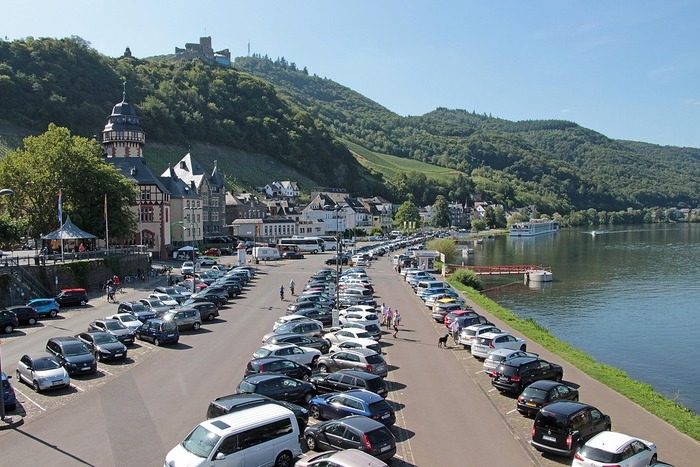The colour of the car is also crucial and can directly change how city surfaces hold on to heat, the study says
A new study revealed that parked cars play a much larger role in intensifying the urban heat island (UHI) effect, the phenomenon describing warmer temperatures in urban landscapes compared to surrounding rural areas. The report by the City and Environment Interactions showed that thermal and radiative properties of cars, especially when they are stationary, alter urban surface properties and contribute to heat retention in cities.
Vehicle Colour is Crucial
The report noted that UHI has been widely studied, but most research has widely overlooked the dynamic influence of vehicles on surface radiative and thermal dynamics. This study looked at the impact of both parked and mobile vehicles in Portugal and found that vehicle colour is crucial as it directly changes how city surfaces hold on to heat.
The research showed that in Lisbon, dark-coloured vehicles made the air around them 3.8°C hotter compared to the nearby asphalt road. This is because car parts, like thin metal surfaces, and dark paint soak up a lot of sunlight and heat up very quickly, which can create temporary “hotspots” that make it even hotter for people walking by.
In contrast, light-coloured cars did not add as much heat because light colours reflected most of the sun’s energy.
According to the research, many of these cars cover up to 10% of road space in busy city centres. This means that the overall “lightness” or “darkness” of a city’s surface changes a lot during the day because of where cars are parked.
Urban Planning and Heat Mitigation
The researchers pointed out that there is an urgent need to integrate the impact of parked vehicles into UHI studies and urban planning strategies. They also came up with potential spatially targeted mitigation strategies, such as colour-based parking restrictions and promoting the construction of shading elements in open parking spaces to mitigate heat exposure.
They also said that adoption of electric vehicles, which emit less waste heat than conventional cars, and make sure these new cars are built with light, heat-reflecting paints at the vehicle design stage.
About The Author
You may also like
Climate Governance Shows Progress, But Gaps Still Remain 10 yrs After Paris Agreement: Report
A Fifth of Migratory Species Face Extinction from Climate Change: Report
Climate change, unplanned construction and a malfunctioning dam can worsen the flooding in north Bengal
Can Private Players Reinvent India’s Forecasting Future?
Switch to renewables reduces emissions, improves worker condition for fashion industry: Report

